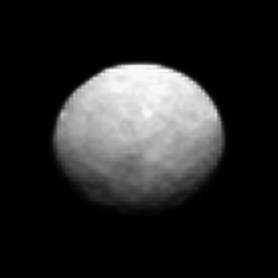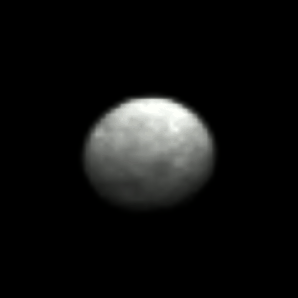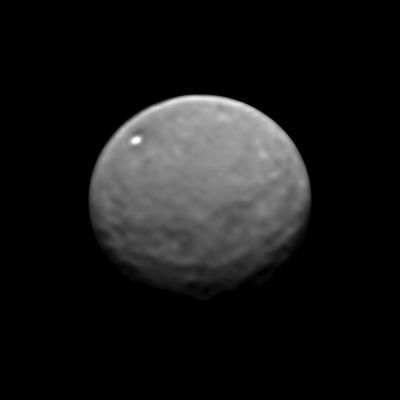Emily Lakdawalla • Jan 27, 2015
Ceres: Just a little bit closer (and officially better than Hubble)
Last week's Dawn images of Ceres were just slightly less detailed than Hubble's best. This week's are just slightly more detailed. Detailed enough to be dangerous. It's very tempting to talk myself into interpretations of the various light and dark splotches visible in this latest animation -- I see double-ringed craters, arcuate ridges, and a smattering of bright dots that I want to call fresh impact craters. But since Dawn's getting closer every minute, I'm going to refrain from drawing any conclusions for a little while! In the meantime, let's just enjoy the images.
Here's the animation more or less as released by the Dawn team -- I aligned it and tweaked the levels a little bit:

Just for fun, let's compare it to the view from January 13:

As he did last week, Björn Jónsson took a subset of the frames from the animation, reprojected them to a common map projection, stacked them, and then reprojected the result to give a super-resolution view of the globe. It's lovely work. But I think I'm still going to put off expressing opinions about what I see. We'll get to watch these features grow and come into focus over the next few weeks. I can be patient for that much longer!

If the images look blurry to you, it's because they've been enlarged. The Dawn team did release still images, one each from January 13 and January 25, showing just how much of the Framing Camera's field of view Ceres presently occupies. It's not much: 27 pixels in the first, and 43 in the second. In both cases, that beacon of a white spot on Ceres is essentially just one pixel. That means it's rather small, and really shockingly bright by comparison to the rest of Ceres' surface.
Shortly after these images showed up online, Ted Stryk pointed out an interesting similarity, which I shared on Twitter:
Double Ceres? No, Ceres from Dawn in 2015 on left, Umbriel from Voyager 2 in 1986 on right (comparison by @tedstryk) pic.twitter.com/4ZgqDMbkvQ
— Emily Lakdawalla (@elakdawalla) January 27, 2015
Pretty striking similarity, eh? To be fair, a lot of things in the solar system look similar when they occupy less than 50 pixels' width on your camera detector. The comparison does make me wonder whether Ceres will continue to look like Umbriel. Whether or not it does, I wonder what Umbriel would look like if we sent a modern camera on a spacecraft that could enter orbit at Uranus to photograph it. We need a mission to an ice giant!



 Explore Worlds
Explore Worlds Find Life
Find Life Defend Earth
Defend Earth

